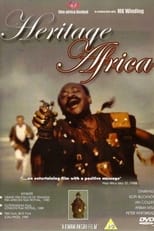

Tommy Ansah
Movies for Tommy Ansah...

Title: Heritage Africa
Character: Kwame Akroma
Released: January 2, 1989
Type: Movie
The story of Quincy Bosomfield who is the product of colonial education and has risen to become the district commissioner. In the process, he abandons his African heritage and all that has real meaning to him.


Title: His Majesty's Sergeant
Character: jafa ibrahim
Released: January 1, 1984
Type: Movie
His Majesty's Sergeant is a film produced by the late Ghanaian director Ato Yanney. A story of racial conflict set in the war-torn Burmese forest during 1944 when three soldiers, an African, an Indian and a Briton, end up hiding together. Three disparate bands, Jafa (Tommy Ebow Ansah), Singh (Surinder Singh Ghuman) and Jake (Tony Trent) are embroiled in their own differences of attitude, prejudice, rank and race equality. The film is a fascinating portrayal about the fight for Independence and the Commonwealth nations which helped Britain to win the war.


Title: Genesis Chapter X
Released: January 1, 1977
Type: Movie
A Ghanaian surgeon in London, returns to his homeland to seek out his mother. She is living with another man after the death of her husband. She does not realise that it is her son who has come to their shack seeking shelter for the night and the elderly couple plan to murder him, taking him for a wealthy young man. She receives a shock when the young man reveals that he knows about the circumstances leading to his father's death - murder by his mother's lover


Title: 10 Rillington Place
Released: February 10, 1971
Type: Movie
The story of British serial killer John Christie, who committed most or all of his crimes in the titular terraced house, and the miscarriage of justice involving Timothy Evans.


Title: Sympathy for the Devil
Released: November 30, 1968
Type: Movie
While The Rolling Stones rehearse "Sympathy for the Devil" in the studio, an alternating narrative reflects on 1968 society, politics and culture through five different vignettes.
